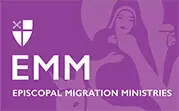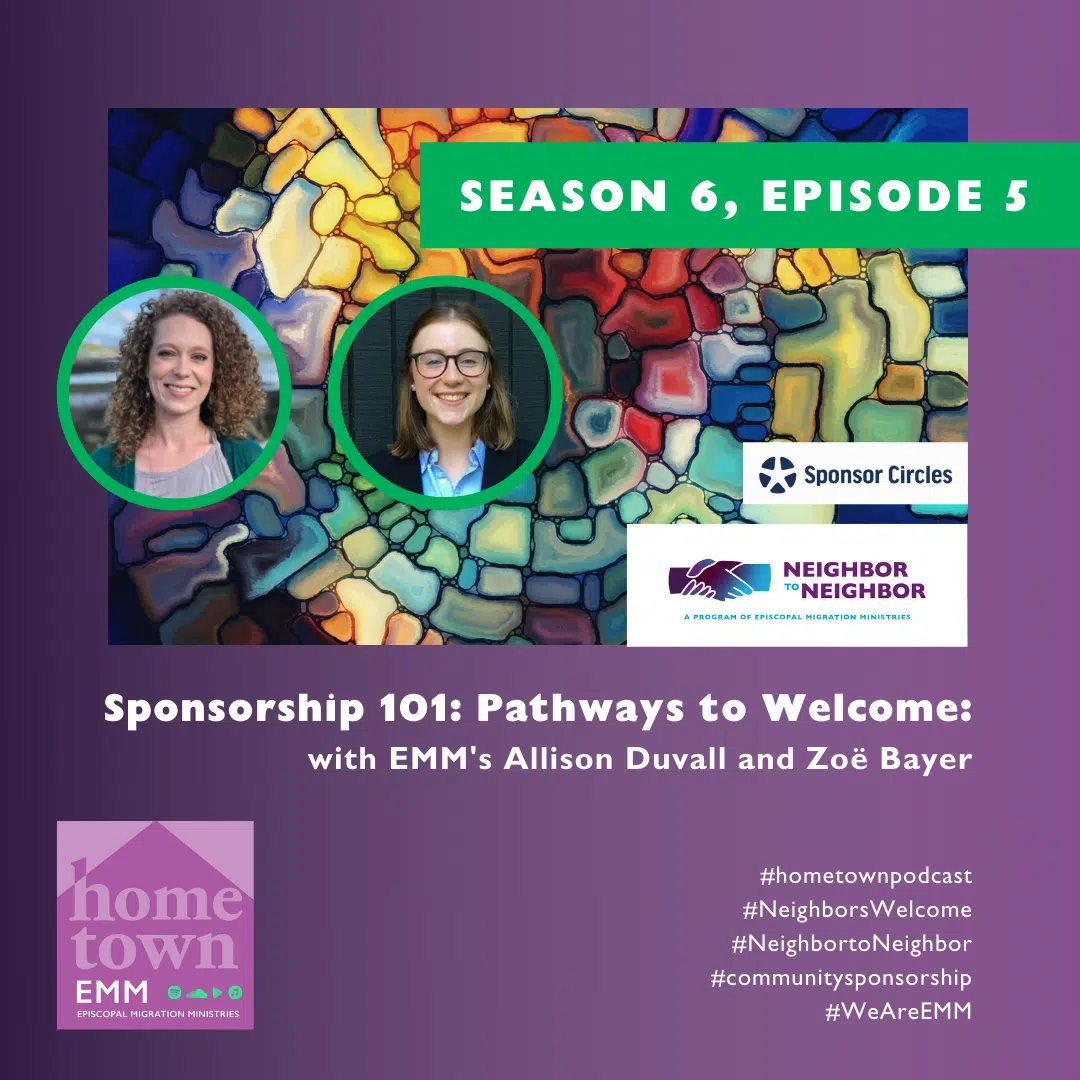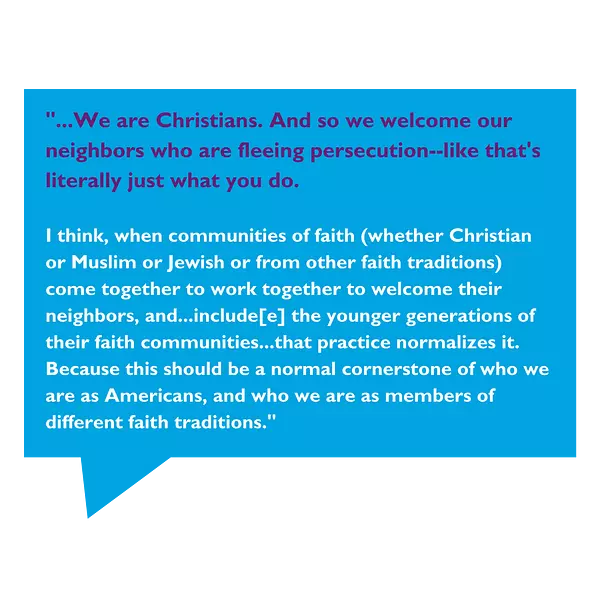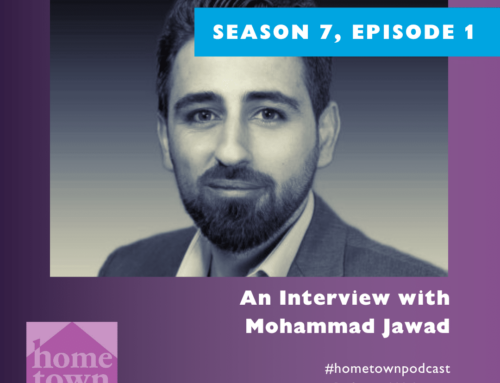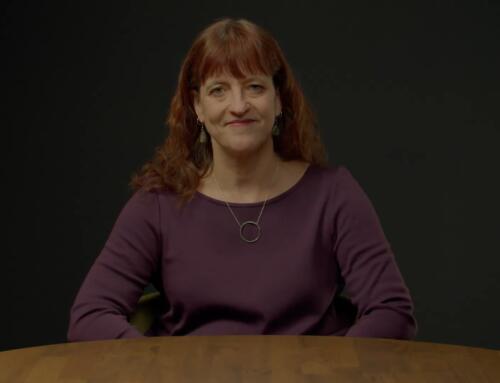This post is part 2 of the “Sponsorship 101: Pathways to Welcome” series.
Private Sponsorship: An exciting window of opportunity
Dana Martin, member of St. Mary’s Episcopal Church in Arlington and part of Neighbor to Neighbor’s Tri-Parish Sponsor Circle Team, is excited for the potential that private sponsorship offers. He notes, “I think what really excites me– I think it’s the model itself, the sponsor circle model- I think it’s remarkable that our government came up with this and has invited local citizen groups to participate. It’s unusual to see national government/federal government cut through all the bureaucratic red tape and really enable and empower local groups to take on this responsibility and respond quickly. It’s my understanding that more people have been placed more quickly than at any time in this country’s history… I hope this inspires other efforts in other areas going forward.”
In our latest podcast episode, “Season 6, Episode 5 – Sponsorship 101: Pathways of Welcome”, Allison Duvall, Senior Manager for Church Relations & Engagement for Episcopal Migration Ministries, describes the differences, advantages, and challenges of private sponsorship, noting that “In private models of sponsorship, all of the resources, financial, material, and volunteer are privately raised; there is no federal funding associated with the provision of services when someone first arrives. Depending on the immigration status of the person being sponsored, they might be eligible for some other assistance. But in private sponsorship, individuals in that team should be prepared to fundraise many thousands of dollars, to find housing, to assign tasks and responsibilities to members of the team, responsibilities that may include going to the Social Security office, enrolling children in school, assisting with enrollment of benefits (where eligible).”
Duvall, excited for the possibilities of private sponsorship being acted upon within the U.S. resettlement landscape, says “We’re learning a lot from our Canadian friends to the north, because Canada has had a government resettlement scheme and a private sponsorship scheme for many decades. So a lot of what we’re doing in the U.S. is borrowing from our Canadian friends. So we know from Canada’s experience that this does work. And we know from our own experience in these early days, private sponsorship, that it works here as well. But it takes a lot of work. So this is something that you want a committed circle of neighbors, who care about this work passionately, to, to work to fund it, and then to work to enact it when their new neighbors arrive.”
Zoë shares in her excitement, noting that this point in time is really just “an exciting place to be.”
Allison Duvall shares the story of how she got involved in co-sponsorship as a youth through her faith community in Lexington, Kentucky.”When I was younger, we were a
Next steps/additional resources:
- Visit https://episcopalmigrationministries.org/neighbortoneighbor/ to start the Discernment Phase for sponsorship, and attend an Information Session (Tuesday evenings at 7pm ET.)
- Visit welcome.us/sponsor to learn more about available sponsorship opportunities
- Visit sponsorcircles.org
- Listen to the full conversation between Zoë and Allison: https://episcopalmigrationministries.org/s6-ep5-sponsorship-101-pathways-to-welcome
